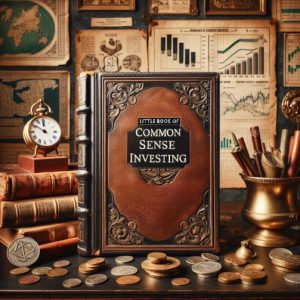Preferred Stock Market Valuation Is Based Primarily Upon Market Rates?
May 6, 2024
The valuation of preferred stocks, a sophisticated interplay of financial metrics and market behaviours, intrigues investors and analysts alike. As key indicators, Price-to-Earnings ratios (P/E ratios) and dividend yields act like navigational beacons, guiding stakeholders through the complex maze of market valuations. These metrics, however, are not mere numbers; they distillate broader market dynamics, including growth prospects, investor sentiment, and macroeconomic conditions, which must be interpreted with a discerning eye.
Drawing from the timeless wisdom of the legendary trader Jesse Livermore, who advised that the market is governed by human emotions rather than mere logic, we approach stock valuation with an understanding of its psychological underpinnings. Similarly, the ancient laws of Solon, emphasizing fairness and balance, remind us that actual value in the stock market is found not only in financial statements but also in inequitable market practices and stable economic environments.
Together, these perspectives enrich our understanding as we navigate the intricacies of preferred stock market valuation, ensuring that our approach is analytically robust and deeply informed by historical insights. This foundational understanding sets the stage for a deeper exploration of how market rates, dividend yields, liquidity, and other factors converge to shape the valuation of preferred stocks in a dynamic financial landscape.
Deciphering the Language of P/E Ratios and Dividend Yields
The price-to-earnings ratio, a ubiquitous valuation metric, illuminates the interplay between a company’s stock price and its earnings per share (EPS). A high P/E ratio hints at investor optimism, suggesting they are willing to pay a premium for the company’s profits. Conversely, a low P/E ratio may indicate a stock flying under the radar, potentially undervalued and ripe for the savvy investor’s attention.
Dividend yield, another tool in the investor’s arsenal, offers insight into the annual dividend income as a percentage of the stock price. A substantial dividend yield could signal a stock flying below the radar, offering investors a lucrative income stream relative to their initial investment. On the other hand, a meagre dividend yield might suggest a stock is overvalued, with investors potentially overlooking more profitable opportunities.
The Dynamic Nature of Market Valuations
Market valuations are like living organisms constantly evolving and responding to internal and external stimuli. Investor sentiment, market conditions, and economic trends play pivotal roles in shaping these valuations. What may appear as an overvalued market one day can swiftly transform into an undervalued opportunity as circumstances shift. Thus, investors must approach these metrics with the agility of a dancer, embracing the fluid nature of the market.
Wisdom from the Ages: Seneca, Plato, and Market Insights
As investors, we stand on the shoulders of giants, drawing wisdom from the ancient philosophers Seneca and Plato to navigate market valuations. Seneca, the Stoic philosopher, reminds us, “It is not because things are difficult that we do not dare; it is because we do not dare that they are difficult.” His words inspire us to embrace the challenge of analyzing market trends, urging us to dare to understand the complexities of P/E ratios and dividend yields.
In his timeless work “The Republic,” Plato emphasizes the importance of balance and proportion, guiding investors to seek companies that exhibit financial stability, profitability, and sustainable growth. His “Theory of Forms” concept encourages investors to look beyond superficial appearances, urging them to uncover the intrinsic factors that contribute to a company’s long-term success.
Black Swan Events: Navigating the Unexpected
In market forecasting, the spectre of Black Swan events looms large. These rare, unpredictable occurrences, akin to natural disasters, pandemics, or financial crises, can profoundly impact the financial markets. While we cannot predict these events, we must acknowledge their potential, much like the ancient mariners who braved uncharted seas, ever vigilant for unseen dangers. Diversification becomes our compass, guiding us through turbulent waters and mitigating the impact of unforeseen events on our investment portfolios.
A Decade of Opportunities: Social Trends and Seneca’s Wisdom
As we peer into the crystal ball of the next decade, social trends emerge as pivotal influencers on the stock market’s trajectory. Demographic shifts, consumer behaviour, and social movements shape the landscape, offering savvy investors opportunities to capitalize. The ageing population, a global phenomenon, presents prospects in healthcare, pharmaceuticals, and senior care services. Seneca’s philosophy resonates here: “The fates guide those who go willingly; those who do not, they drag.” Adaptability becomes our beacon, urging us to embrace evolving social dynamics.
The sustainability movement, a rising tide, transforms consumer preferences and investment choices. Seneca’s advocacy for living in harmony with nature finds a modern echo in eco-friendly practices. Companies embracing sustainability gain a competitive edge, attracting investors who recognize the longevity of environmentally responsible enterprises.
Plato’s Cave and the Digital Age: Navigating the Shadows of Market Perception
Plato’s “Allegory of the Cave” takes on profound significance in the digital era, where technological advancements and digital platforms revolutionize consumer behaviour. In this modern context, companies that innovate, personalize, and provide seamless digital experiences stand out, offering investors exceptional returns. Plato’s allegory serves as a crucial reminder for investors to seek enlightenment, urging them to discern genuine opportunities from fleeting trends. This philosophical insight encourages a deeper understanding of how digital transformations influence market valuations and investor perceptions.
Financial Analysis: A Symphony of Quantitative and Qualitative Insights
Assessing a company’s financial health demands a symphony of quantitative and qualitative analysis, echoing the ancient wisdom of Seneca, who stated, “A gem cannot be polished without friction, nor a man perfected without trials.” This approach requires investors to embrace diligence, scrutinizing financial statements to uncover hidden gems among stocks. Plato’s wisdom harmonizes with this analytical rigour, urging investors to seek balance and proportion in companies’ financial metrics.
The quest for long-term success in the stock market is akin to a philosophical journey guided by the enduring wisdom of Seneca and Plato. Their teachings inspire us to navigate the complexities of market valuations, assess financial health, and embrace future uncertainties with courage and foresight. By integrating these ancient philosophies with modern economic practices, investors can achieve a more holistic understanding of the market’s potential and pitfalls, ensuring a well-rounded approach to stock market investment.
Conclusion
In conclusion, preferred stock market valuation is based primarily upon market rates, dividend yield, market sentiment, liquidity, and other factors that are not as important. Preferred stock market valuation is based primarily upon market rates, dividend yield, and market sentiment but also considers liquidity and other nuanced elements that might seem less significant at first glance. Each of these components plays a vital role in painting a comprehensive picture of a stock’s true value.
Market rates provide a baseline, setting the stage for how preferred stocks are compared against current interest rates, influencing investor expectations and demand. Dividend yield remains a cornerstone, offering a direct insight into the returns investors might expect relative to the stock’s price, serving as a key attractor or detractor. Market sentiment, ever dynamic, reflects the collective attitude of investors towards specific sectors or the market as a whole, often dictating price movements based on perceptions and future expectations.
Liquidity, though sometimes underemphasized, is crucial, as it affects an investor’s ability to enter or exit positions without significant price concessions. Other factors, such as macroeconomic conditions, regulatory changes, and company-specific news, also weave into the valuation tapestry, each adding a layer of complexity and depth to the valuation process.
By embracing a holistic approach that considers both the apparent and subtle influences on valuation, investors can navigate the preferred stock market with greater acumen and confidence. This comprehensive method ensures that all potential impacts on valuation are considered, allowing for more informed and strategic investment decisions in the stock market’s complex and ever-evolving landscape.
Engaging Articles to Enrich Your Mind

Navigating the Financial Maze: Correction vs. Bear Market vs. Recession

Interest Rates and Gold: A Symbiotic Dance

Women in Investing: Breaking Barriers and Succeeding

Elegance in Investment: How to Buy Gold on Robinhood

Little Book of Common Sense Investing: Uncommon Sense for Smart Investors

Trend Trader: Tune Out the Madness, Follow the Trend

What Type of Trader Are You: Fast Rabbit or Steady Turtle?

Trading Journal: The invaluable tool for traders

Winning the loser’s game timeless strategies for successful investing

Why ‘When Will Market Bottom Out?’ is Misguided

What Is Mob Mentality? A Symbol of Irrationality

US Dollar Devaluation: How the Fed Legally Robs You

How to Short the Market with Options: Reserved for the Bold and Fearless

The Suave Strategy: How to Buy Gold and Silver for Investment




